In this second part of this series we will look at dome mandalas and mandalas from the cultures of ancient Rome, prehistoric Stone Circles, British Isles/Celtic, Native America, China, Korea, Japan, Thailand, Hinduism, Tibet and Islam.
Dome Architecture as Mandala
“One of the most striking uses of the mandala,” Robert Lawlor tells us, “is dome architecture, Islamic and Christian.”
Take for instance the Hagia Sophia Cathedral in Istanbul, Turkey
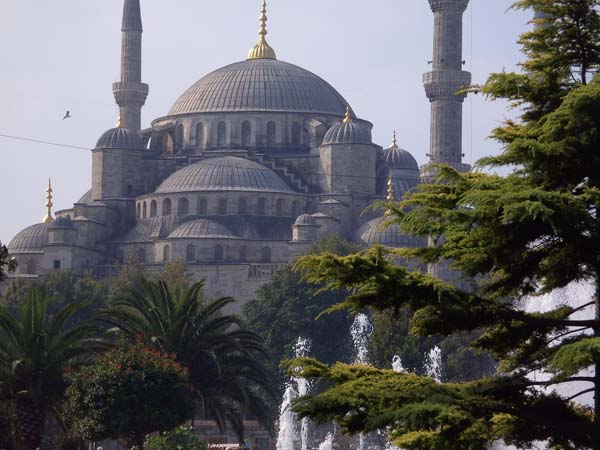
or the Shah Mosque in Isfahan, Iran
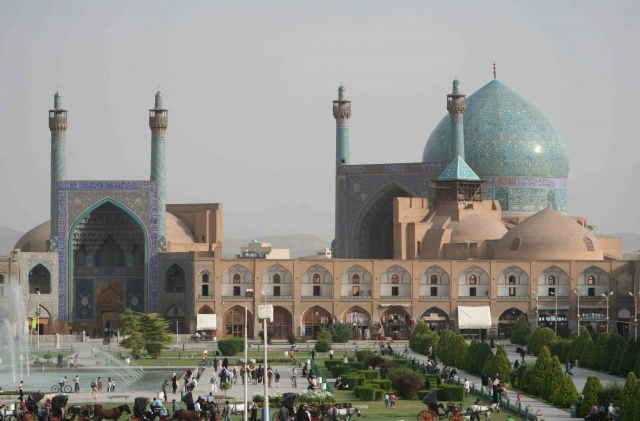
Or the Basilica di Santa Maria del Fiore in Florence, Italy
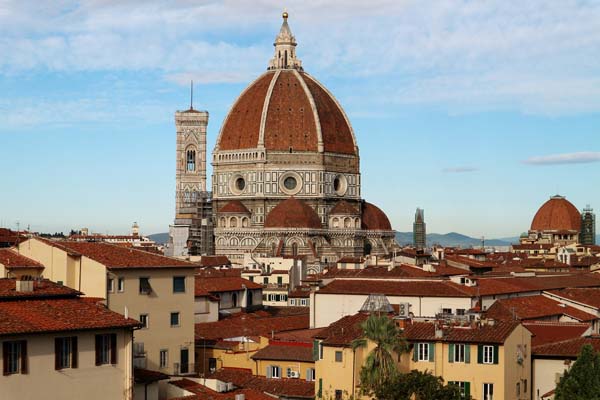
Or the Dome of the Rock in Jerusalem
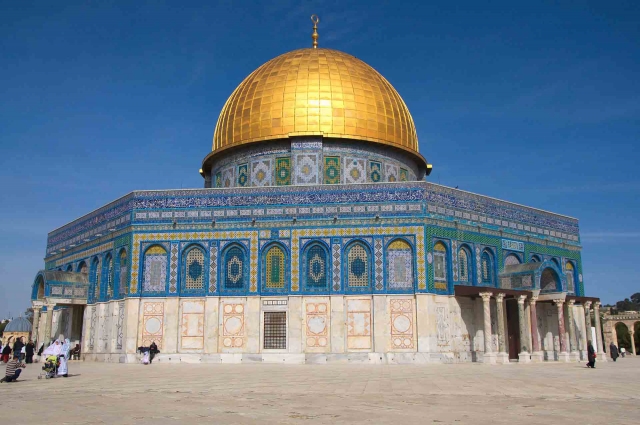
Or St. Peter’s Basilica in Vatican City
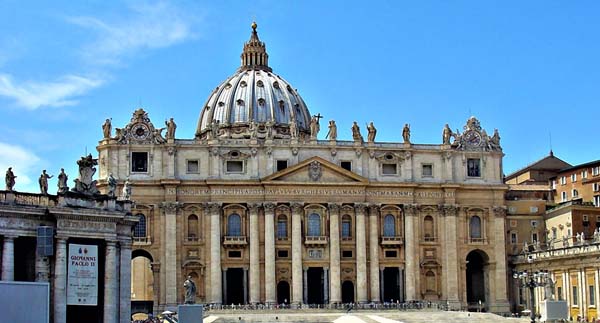
Or the Taj Mahal in Agra, India
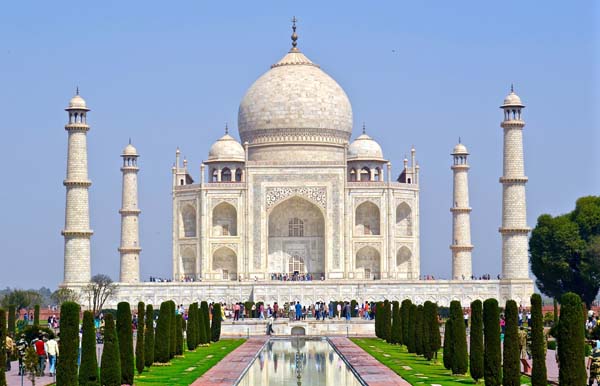
Or Saint Basil’s Cathedral in Moscow, Russia
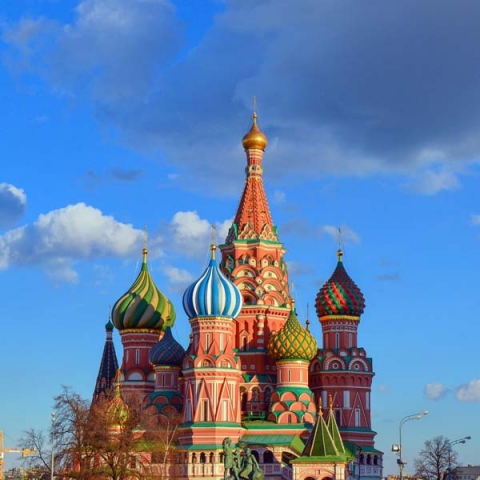
Or Sacre Coeur Basilica in Paris, France
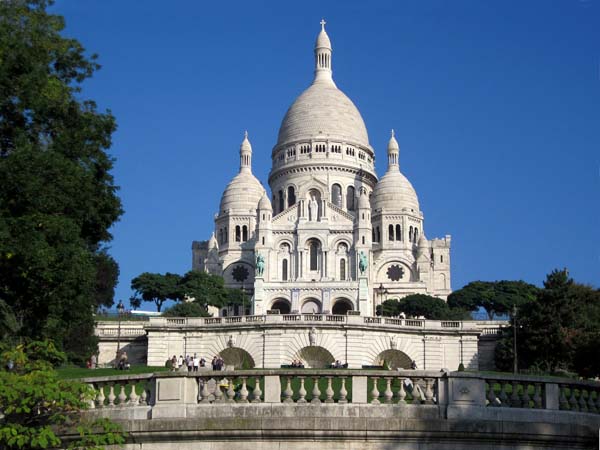
“The square represents the earth held in fourfold embrace by the circular vault of the sky and hence subject to the ever-flowing wheel of time.
The relationship of form and movement, space and time, is evoked by the mandala.
The mandala is the division of the Unity circle into the comprehensible forms of square, hexagon, octagon, enneagon, etc. and these forms are considered to be the primary thoughts of God emerging out of the circular Unity.
But for thoughts to become activities and workings they require a will or force of intention.
The primary geometric forms are considered to be the crystallizations of the creative thoughts of God.”18
In this article we do not go into the architecture of Buddhist or Hindu temples. We will cover that in a future article.
Ancient Roman Mandalas
- The oculus of the Pantheon in Rome
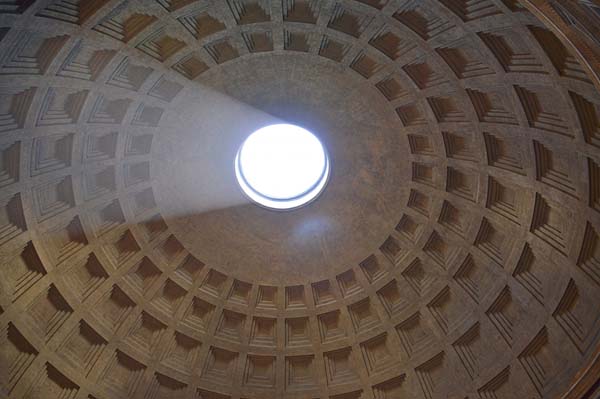
- Roman mosaic – Athens
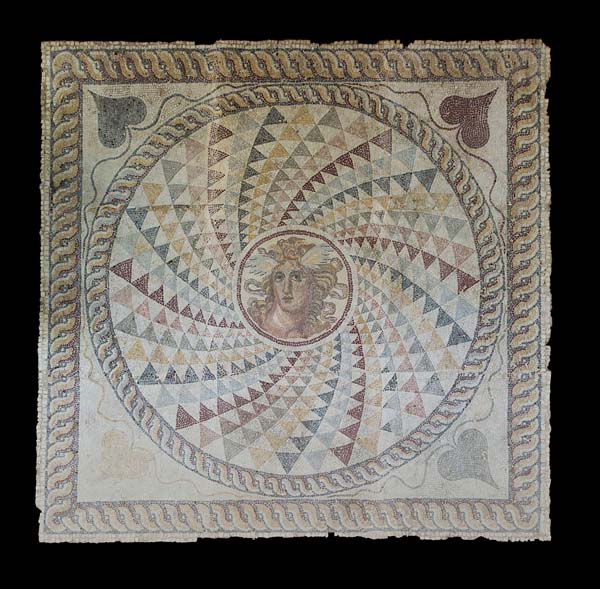
- Roman mosaic – Rome
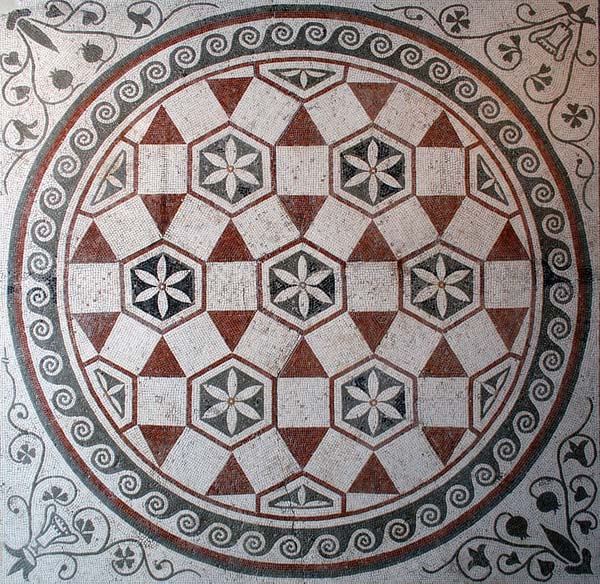
- Roman mosaic – Pompei
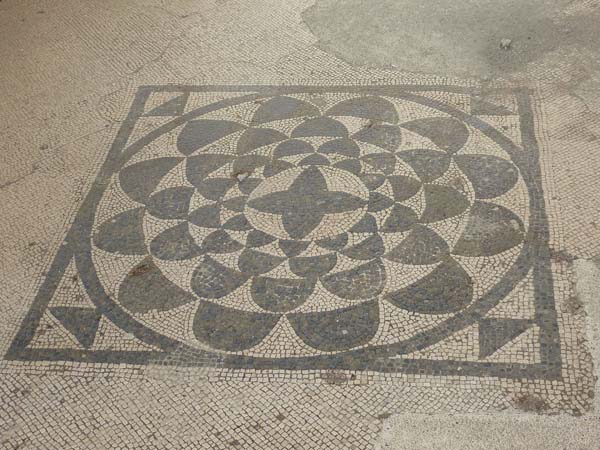
- Geometrical rose in a Roman mosaic – Spain. The Islamic influence is clear.
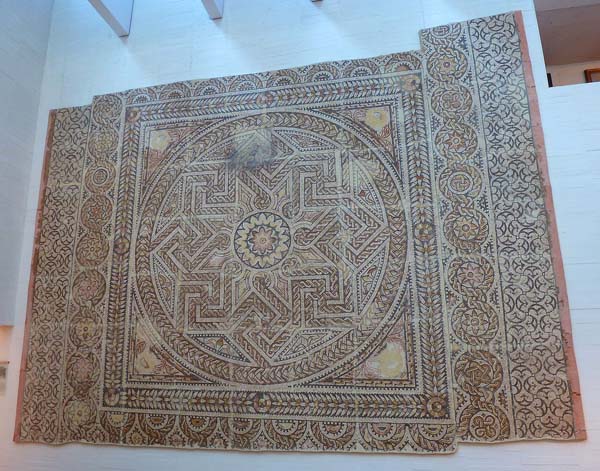
Note the similar geometry in ancient Roman mosaics – a torus, a flower of life-like pattern, geometry very similar to Islamic art, concentric circles…etc.
Prehistoric Stone Circles
“All experts agree that stone circles are of pre-Christian date, but beyond that stone circles have proven difficult to date accurately.”19
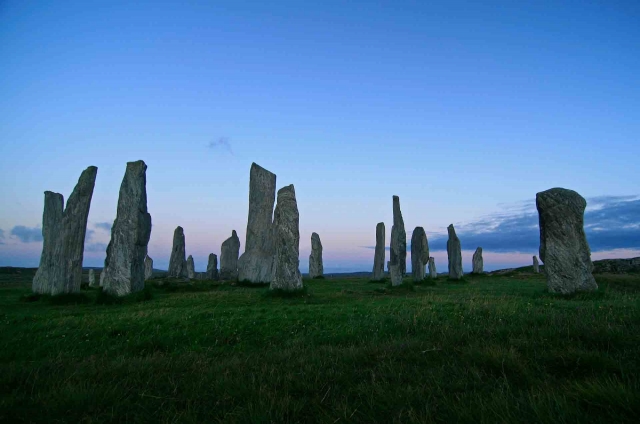
Keith Critchlow writes in Time Stands Still: New Light on Megalithic Science, “We are proposing that the megalithic temple-builders were naturally disposed, like so many other ancient peoples and civilizations, to lay out a pattern of their cosmos within which and from which they could gain greater understanding of their own position and role in the scheme of things. Such patterns incorporating significant numbers were the basis of their temples. And their temples in turn by embodying the archetypes help ‘stabilize the world’.”
Seethe image below and the consistent geometry used in the following stone circles:
- Dinnever Hill
- Long Meg
- Cambret Moor
- Barbrook

Credit: Quadrivium, page 113
And then there is the famous and enigmatic Stonehenge in Wiltshire, England.

Stonehenge
Stonehenge has a hexagonal structure.
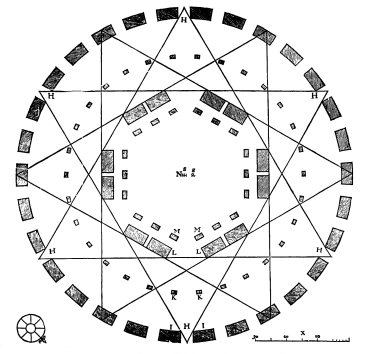
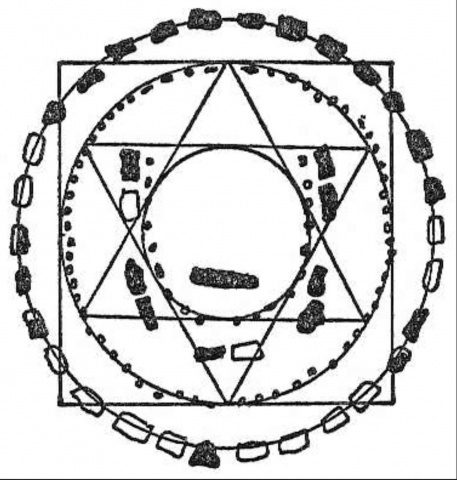
Stones along the outer circle represent the moon’s path.
The structure was used to predict the moon’s rising, settings, and eclipses, as well as solar rhythms, among other things. There is a lot to be said about Stonehenge as we move through Cosmic Core.
Celtic Mandalas
Celtic mandalas are primarily knot designs. These knot designs are rich in symmetries.
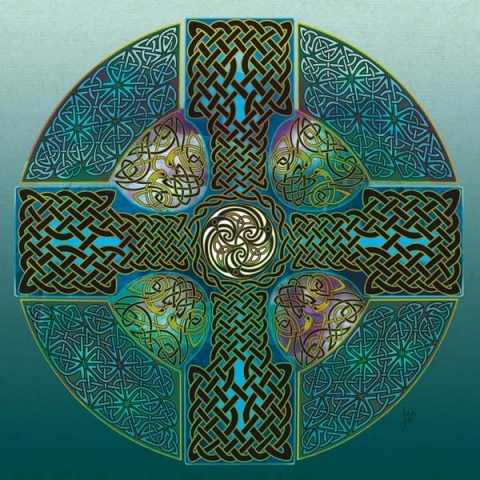
Celtic knots are commonly shown as a single cord woven in and out of itself to form a symmetrical design – reminding us of the timeless nature of our spirit and the meanderings of our journey back to Unity.
Knot designs with a closed path are considered a symbol of eternity.
Knots with an open path signify a journey (physical and spiritual).
Below are some of the more common Celtic knot designs:
-
Triquetra Celtic symbol – a symbol of the holy trinity (body, mind, spirit)
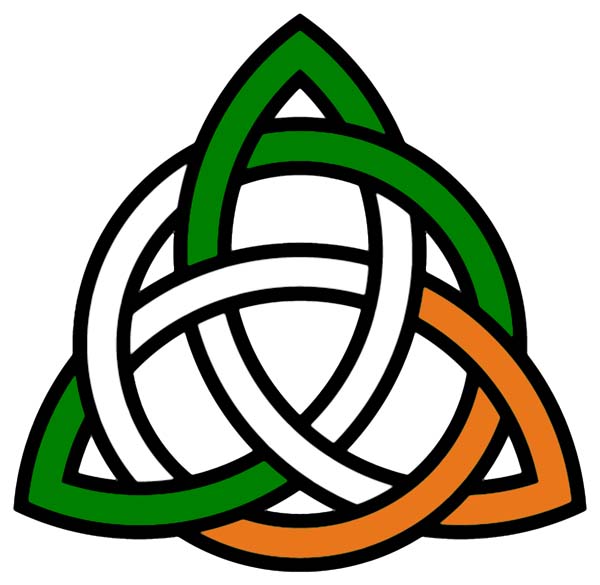
-
Triskelion – Celtic/Greek symbol of personal growth, human development and spiritual expansion
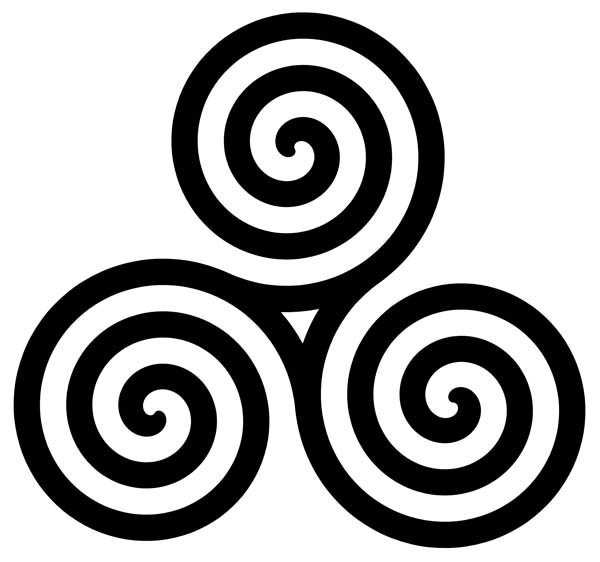
-
Quaternary knot – four directions; four seasons; four elements; four pagan holidays; four corners of the world…etc.
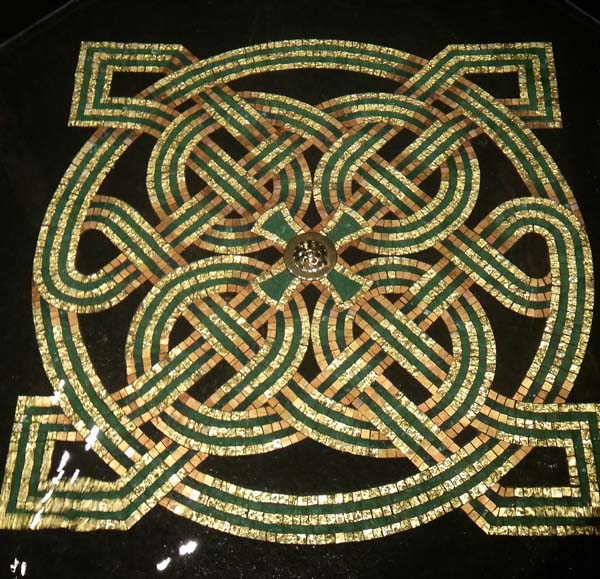
-
Fivefold symbol – tapping into the ‘fifth element’. This symbolizes consciousness directed in love. It hints at an all-encompassing illumination when all five elements are balanced within human understanding.
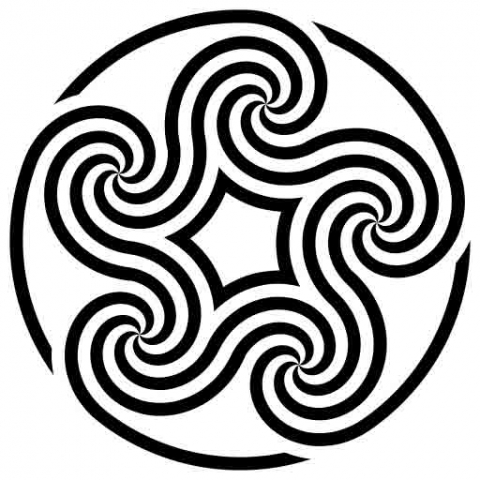
- Spiral Celtic symbol – represents spiritual awareness and expansion of thought
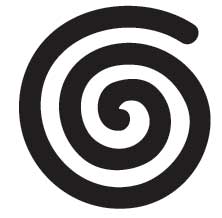
- Celtic knot (mystic knot) mandala – contemplation into the inner workings of our lives and how they are connected to all others
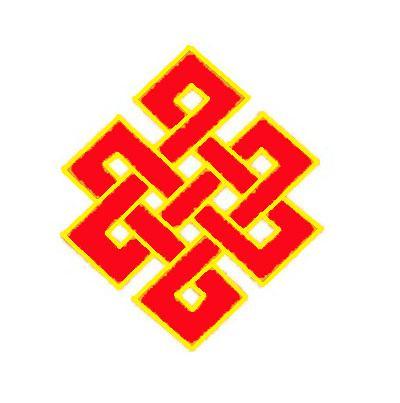
Native American Mandalas
Native American mandalas symbolize a shield of good luck, prosperity, wealth and happiness to some tribes.
Medicine wheels are another form of Native American mandalas. These medicine wheels, or sacred hoop, are used for health and healing. They embody the four directions and honor cycles and continual change.
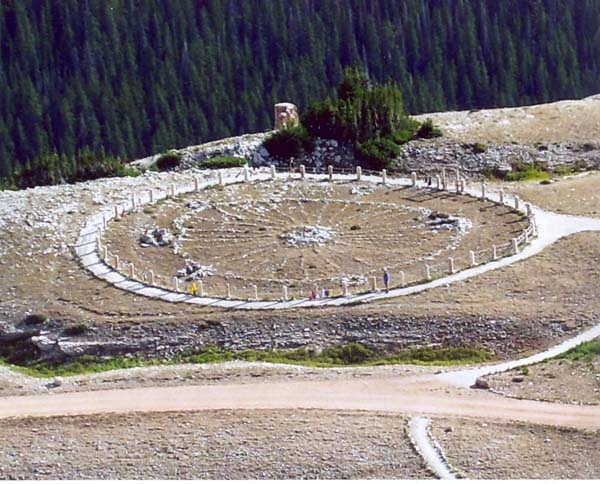
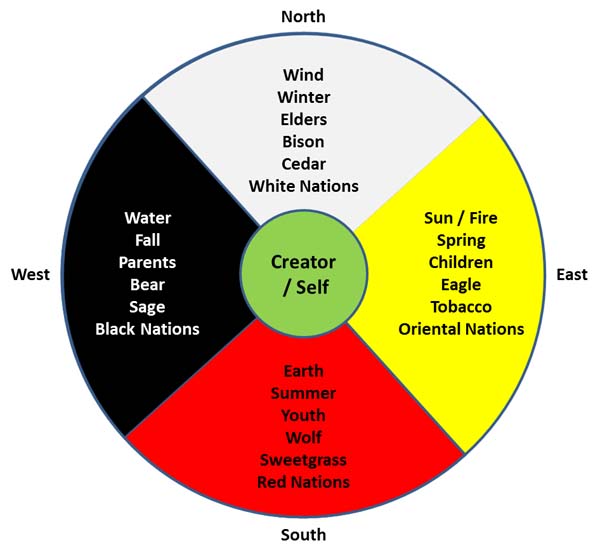
The well-known circular Aztec and Mayan calendars were used as timekeeping devices, a symbol of the universe, and a representation of our journey of consciousness through the universe backs towards Unity.
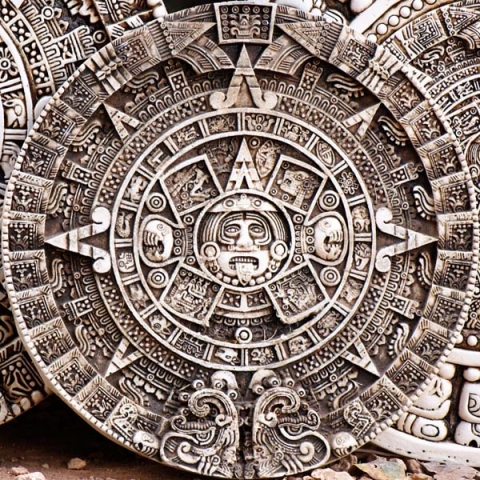
The Hunab Ku is a Mayan glyph for the center of the galaxy. It represents the gateway to other galaxies and to all consciousness everywhere. It encompasses all opposites and unites them as one.
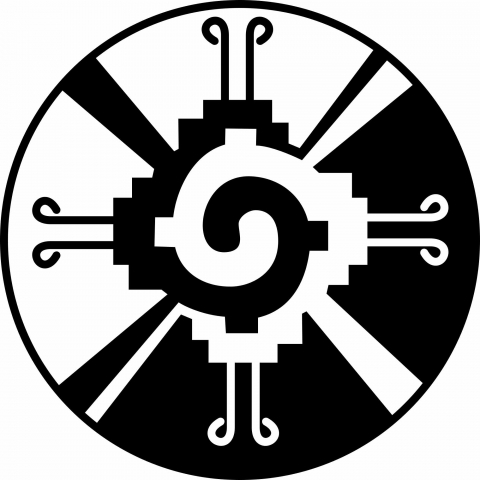
“Hunab Ku, according to the Mayans, is also the consciousness which organized all matter from a whirling disk – into stars, planets and solar systems. Hunab Ku is the Mother Womb which is constantly giving birth to new stars… They also believed that the ultimate Creator directs everything that happens in our galaxy from its center through the emanation of periodic energy bursts of consciousness.”20
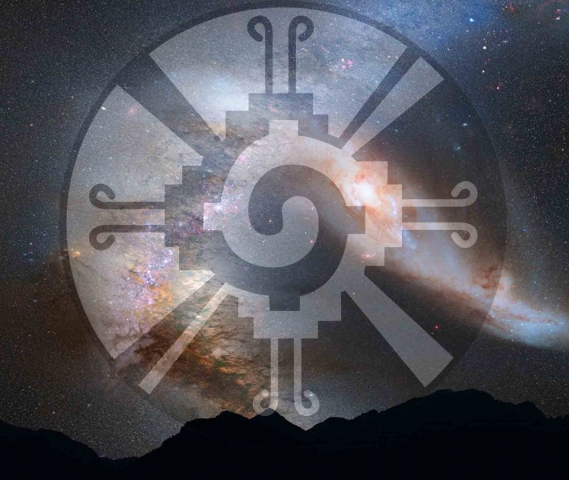
Navajo sand mandalas were used for healing purposes only. They do not view the paintings as static objects but as spiritual living beings to be treated with respect.
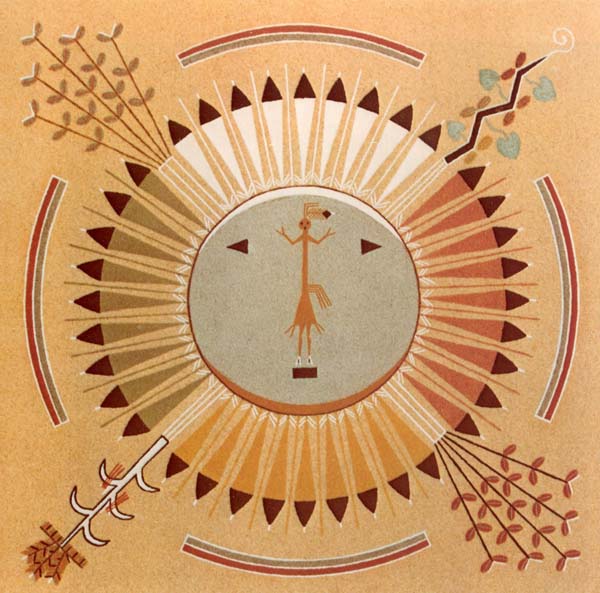
Native teepees are conical shapes built around a pole representing the ‘axis mundi’ or world axis.

Here is a mandala by Choctaw artist Theresa Morris of Tahlequah, 2012.
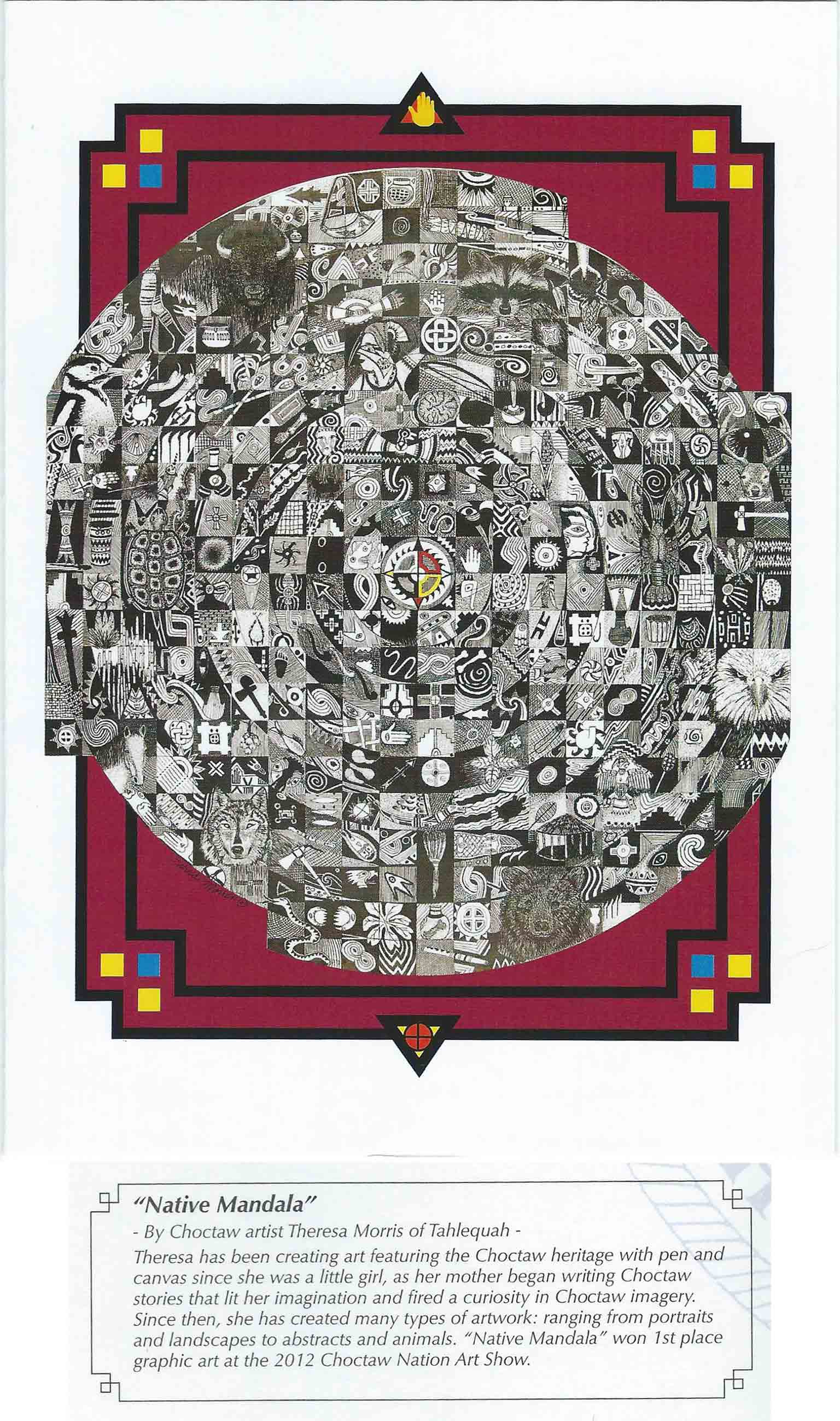
And then there is the well-known dream catcher. It originates in Ojibwe culture as the “spider web charm” and was traditionally hung over an infant’s cradle for protection.
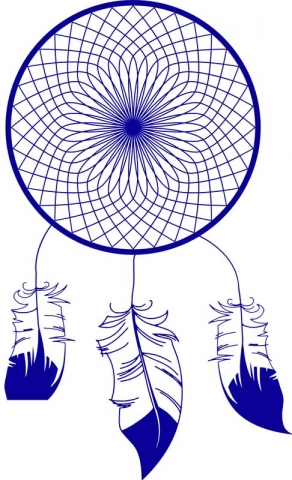
Asian Mandalas: Japanese, Chinese, Korean, Thai, & Indonesian
Japan
Many Japaneses mandalas are connected with texts and images from India and the Himalayas.
These mandala scrolls and paintings were popular in Japan from the 9th century onward.
The most widely known is the Ryokai Mandala, or Two World Mandala.
It is composed of two separate mandalas:
-
Taizokai – Womb World Mandala (ultimate principle)
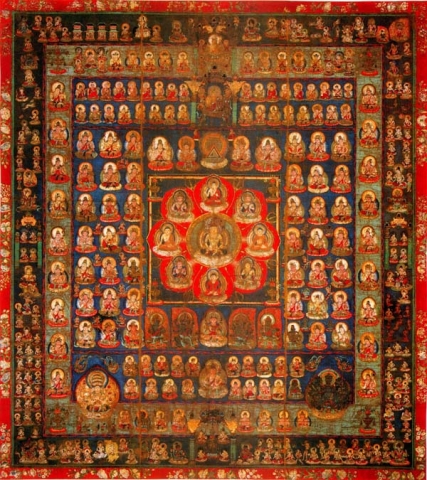
-
Kongokai – Diamond World Mandala (mind or intelligence)
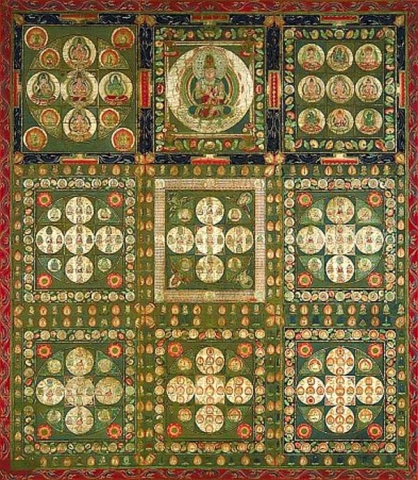
The two are fundamentally one (as in water and wave).
These mandalas are of special importance to Japan’s esoteric sects such as Shingon and Tendai.
“The five elements are considered inanimate (this equates to the Womb World Mandala). Only by adding the sixth element – mind, perception or spiritual consciousness – do the five become animate. This equates to the Diamond World Mandala.
There is “unity” only when the sixth element is added. Without the sixth element, ordinary eyes see only the differentiated forms or appearances.”21
The Enso is a Zen Buddhist circle hand-drawn in one or two uninhibited brush strokes. They represent enlightenment, strength, elegance, the universe, and mu (the void).
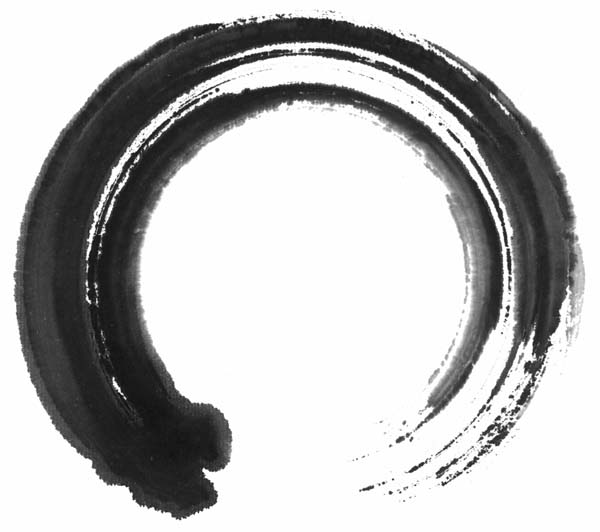
Monju Bosatsu with Eight Sacred Sanskrit Syllables22 features two concentric circles and eight smaller circles with the Bodhisattva of Wisdom at the center. This painting on a silk scroll is from the Nanbokucho period from 1336-1392.
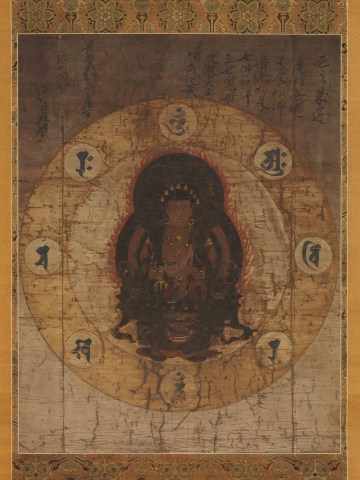
China
The Taoist yin-yang represents opposition and interdependence.
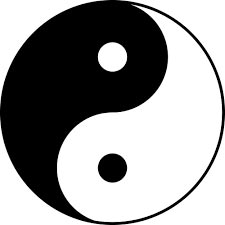
“The universe was early divided into Earth below and Heaven above. These, two as one, gave the idea of opposites but forming a unity. Each opposite was assumed to be powerful and so was their final unity. For creation of the universe they projected reproduction to conceive creation. Now reproduction results in the union of two opposites as male and female. Correspondingly, the Chinese believed Light and Darkness, as the ideal opposites, when united, yielded creative energy. The two opposites were further conceived as matter and energy which became dual-natured but as one. The two opposites were yin-yang and their unity was called Chi.”23
“The mandala in Nichiren Buddhism is called a moji-mandala and is a hanging paper scroll or wooden tablet whose inscription consists of Chinese characters and medieval-Sanskrit script representing elements of the Buddha’s enlightenment, protective Buddhist deities, and certain Buddhist concepts. Called the Gohonzon, it was originally inscribed by Nichiren, the founder of this branch of Japanese Buddhism, during the late 13th century.”24
Korea
In Korea a common form of mandala is the Samsaeg-ui Taegeuk or triple yin yang surrounded by eight trigrams.
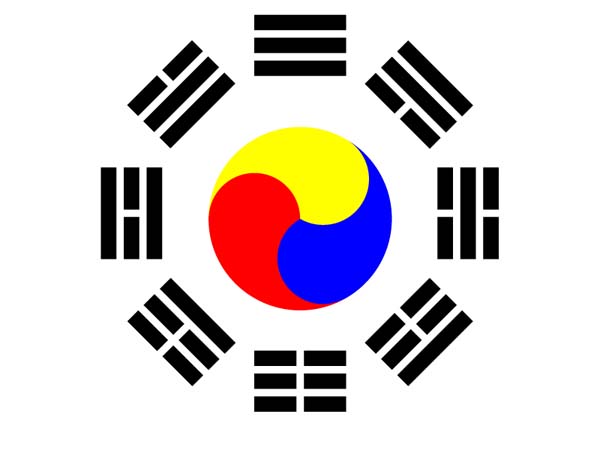
Thailand
Yantra Tattooing is popular in Thailand. This is form of tattooing that originated among Thai tribes of southwest China and northwest Vietnam over 2000 years ago.
Sak – tattoo
yan – yantra – a mystical diagram used in Dharmic religions
The Sak Yant-Paed Dan has a circumference with eight representations of Buddha in each half and mantras that protect those who travel.
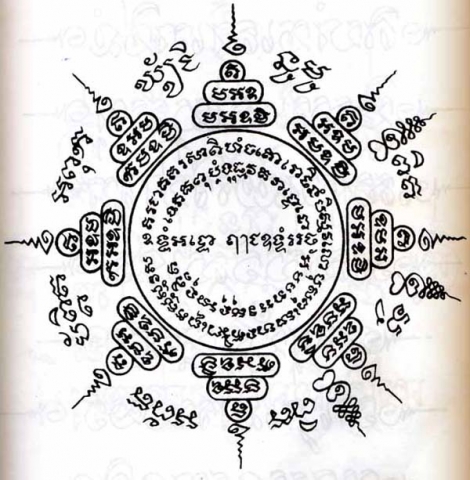
Hindu Mandalas – Yantras
A yantra is a two- or three-dimensional geometric composition used in meditative or spiritual practices.
They are a well-known spiritual symbol in Hinduism and are considered to represent the abode of the deity.
“Yantras function as revelatory symbols of cosmic truths and as instructional charts of the spiritual aspect of human experience. All the primal shapes of a yantra are psychological symbols corresponding to inner states of human consciousness, through which control and expansion of psychic forces are possible.” 25
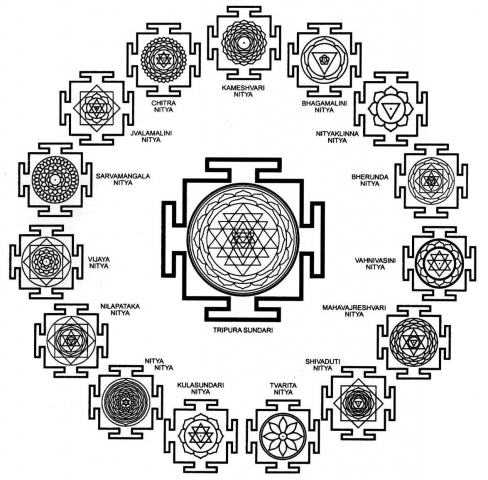
The Sri Yantra is known as the mother of all yantras.
It represents the primordial sound of AUM, a place or process of spiritual pilgrimage, and the cosmos – micro and macro.
There are nine-interlocking triangles surrounded by two circles of lotus petals encased in the ‘earth citadel’. The interlocking triangles are in perfect distance from each subsequent set of triangles based on the ratio of 3.14 (pi).
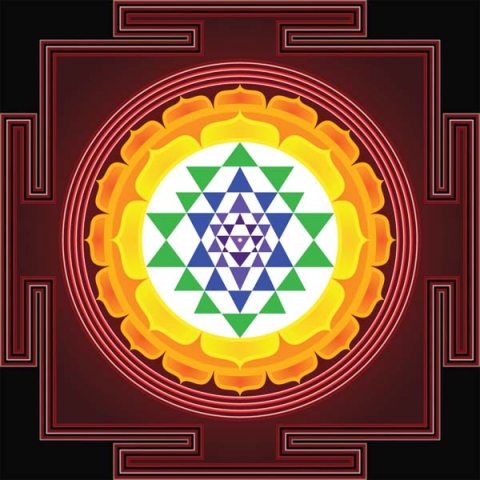
Elements of the Yantra:
- Center point (bindu) – unity, the origin, principle of manifestation and release of supreme consciousness
- circle – extension of the point – creation of individualized consciousness out of cosmic consciousness
- triangle – principle of movement; harmony, balance
- square – material needs – stability, solidity and contentment
- lotus petals – eightfold manifested energy – earth, fire, water, air, aether, mind, intellect, ego
- concentric circles – three gunas: satwa – harmony; rajas – action; and tamas – Inertia
Tibetan Mandalas
A well-known form of mandala in Buddhism is the Tibetan Wheel of Life.
This spiritual symbol represents the cosmos. It is a microcosm of the universe representing the enlightened mind or “Buddhafield”.
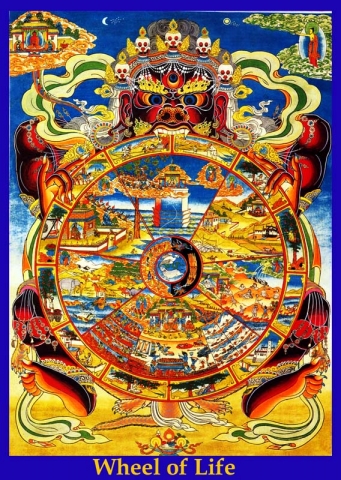
These mandalas have developed into sand-painting.
One grain at a time is dropped into the mandala.
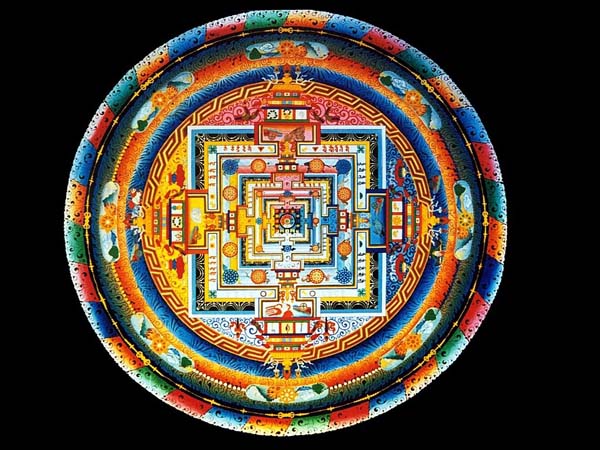
The sand-painting is destroyed afterward to remind all that nothing is permanent and all is constantly in flux. The idea is to encourage non-attachment.

This represents the core essence of Vajrayana teachings “the mind is a microcosm representing various divine powers at work in the universe.”26
The outer circle of the Tibetan Wheel of Life symbolizes wisdom.
Inside that is the ring of eight charnel grounds. It reminds us to always be mindful of death and the impermanence of existence.
Inside the rings are the four walls of the mandala palace that form a protective barrier around the sacred center.
Each layer represents a quality one must obtain before entering such as purity, devotion, compassion…etc.
“According to Buddhist scripture, sand mandalas transmit positive energies to the environment and to the people who view them. While constructing a mandala, Buddhist monks chant and meditate to invoke the divine energies of the deities residing within the mandala. The monks then ask for the deities’ healing blessings. A mandala’s healing power extends to the whole world even before it is swept up and dispersed into flowing water—a further expression of sharing the mandala’s blessings with all.”27
Also in Tibet is the gankyil – triple yin yang or ‘wheel of joy’. This symbol is composed of three swirling interconnected blades and is similar to the Korean Samsaeg-ui Taegeuk.
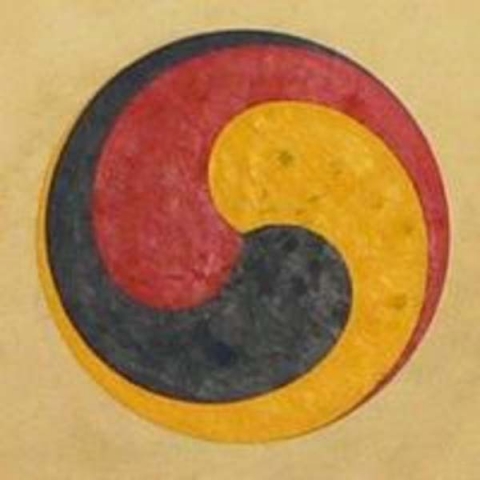
Freddy Silva explains, “In Dzogchen (said to be the highest form of Tibetan Buddhism), this threefold spiral is representative of the stages to enlightenment: using compassion and knowledge to overcome the limitations of the physical world; contemplating the mechanics of duality and freeing the spirit from rationality; and finally, the liberation from conditioned existence and the achievement of wisdom.”
There is also the Vishva vajra Mandala in Buddhism:
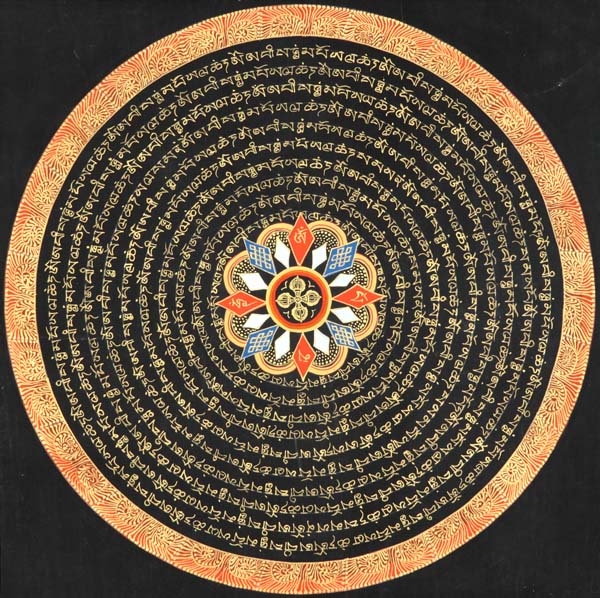
Here is the ‘Ah’ symbol mandala associated with Dzogchen or “Great Perfection”, a tradition of teachings in Tibetan Buddhism aimed at discovering and continuing in the natural primordial state of being.
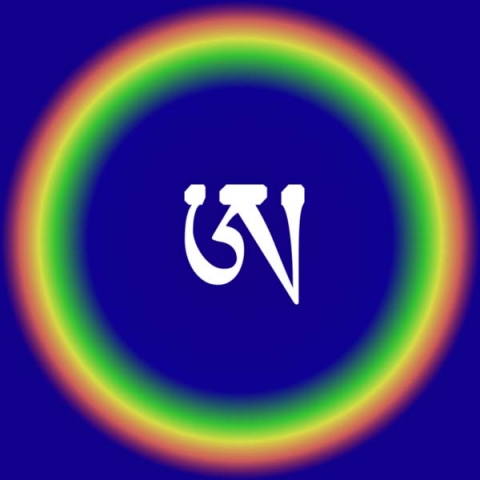
Indonesian Buddhist Mandala Temple – Borobudur
The temple of Borobudur in Java, Indonesia is the world’s largest Buddhist temple. It was originally built in the 9th century and consists of nine stacked platforms, six square and three circular, topped by a central dome. It is decorated with 2,672 relief panels and 504 Buddha statues. The central dome is surrounded by 72 Buddha statues, each seated inside a perforated stupa.
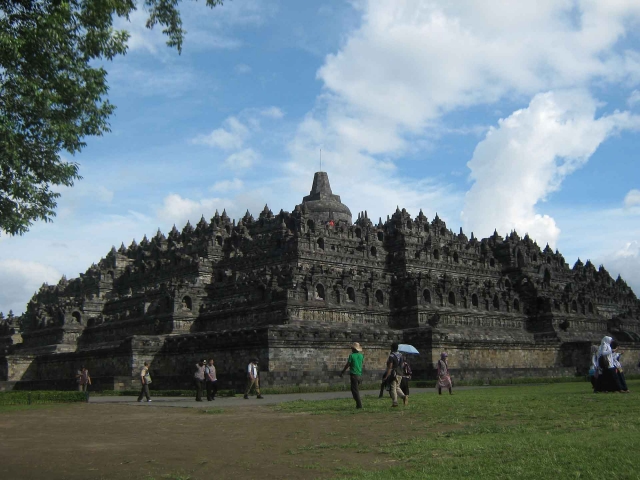
The floor plan was laid out as a mandala:
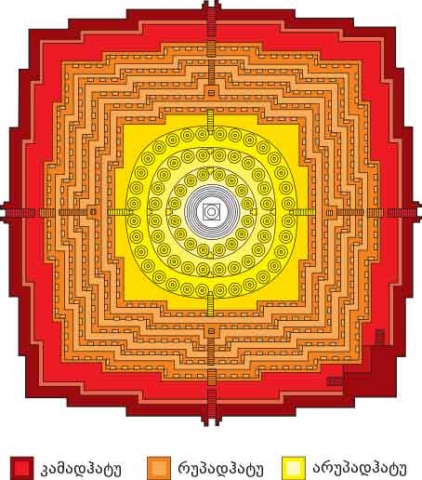
Islamic Mandalas & Art
Daud Sutton writes, “The role of sacred art is to support the spiritual life of those whom it surrounds, to instill a way of perceiving the world and the subtle realities behind it. The challenge thus facing the traditional artisan is how to build with matter so as to best embody spirit.”
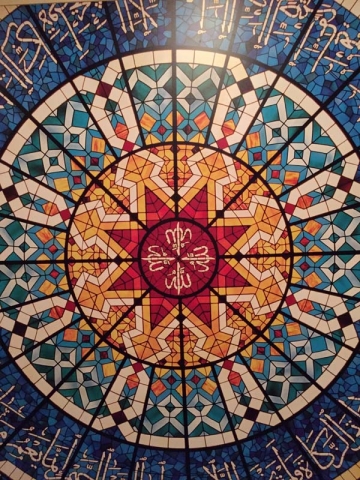
Freddy Silva writes in Secrets in the Fields, “Sacred geometry enables humanity to see the archetypal world of God. At its heart, the Arabic faith still contains and unadulterated snapshot of this primordial truth, in the geometric figures adorning its mosques and art forms. Consequently, Islam has served as curator and preserver, maintaining the purity of the philosophy of geometry, ‘akin to the Pythagorean-Platonic tradition of antiquity but in a totally sacred universe free of the nationalism and rationalism which finally stifled and destroyed the esoteric traditions of Greek intellectuality” to quote the eminent Arabic historian S.H. Nasr.”
Islamic art involves breathtakingly beautiful geometric designs. Islamic law forbids depiction of animals or humans. This is called aniconism. It began as a way to prevent idolatry. The deeper symbolism of this practice suggests that Allah, or the Source by any name you call it, is beyond all form, species, gender, religion and description.
There are two key aspects of it:
- Arabic calligraphy
- Abstract ornamentation using a varied but remarkably integrated visual language. Designs include geometric patterns and idealized plant forms embodying organic life and rhythm.
- These include geometric pattern and arabesque.
Islamic patterns speak of infinity and the omnipresent center.
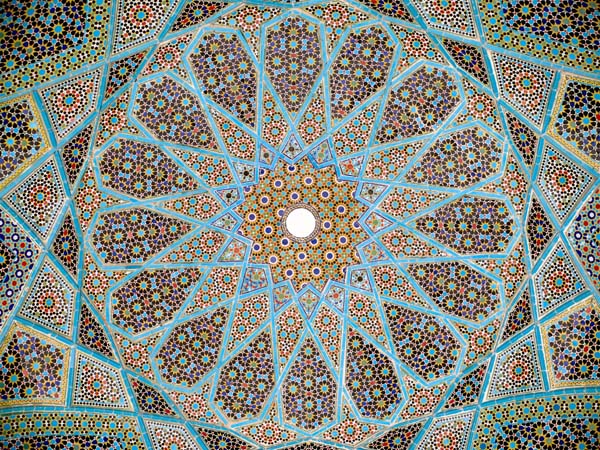
Subgrids are laid down below a pattern. The subgrids are rarely shown. They are considered to be the underlying structure of reality, with the cosmos overlaid.
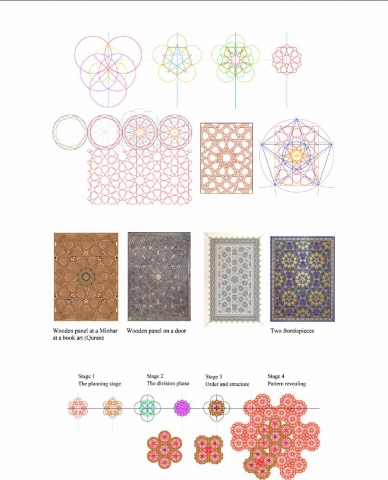
“The underlying tiling pattern is usually hidden beneath the final design, as if behind a veil, but the viewer is always given an intimation of the hidden order and this is part of what gives the designs their meditative power.”28
There are many beautiful circular Islamic patterns.
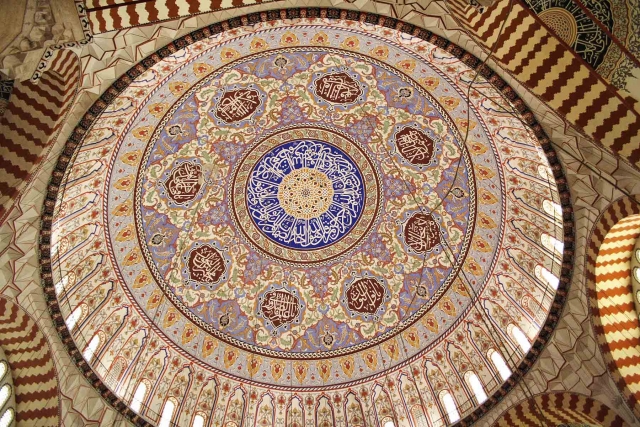
“In Islamic art the geometric figure of the circle represents the primordial symbol of unity and the ultimate source of all diversity in creation. The natural division of the circle into regular divisions is the ritual starting point for many traditional Islamic patterns, as demonstrated in the drawings below.”29
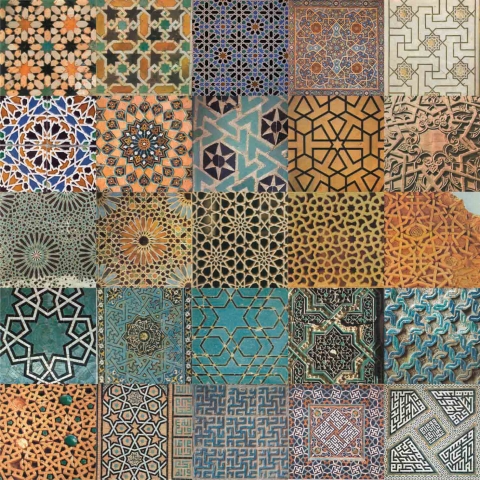
And as we saw, mosques are 3D mandalas. The interior dome of the roof represents the arch of the heavens.
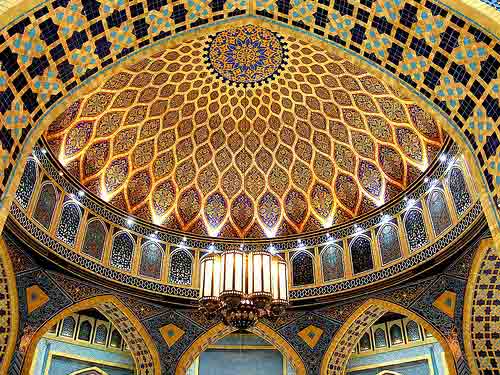
Ibn Battuta Mall, Dubai
Here are images of the outside and inside of the dome of the Putra Mosque in Kuala Lumpur, Malaysia:
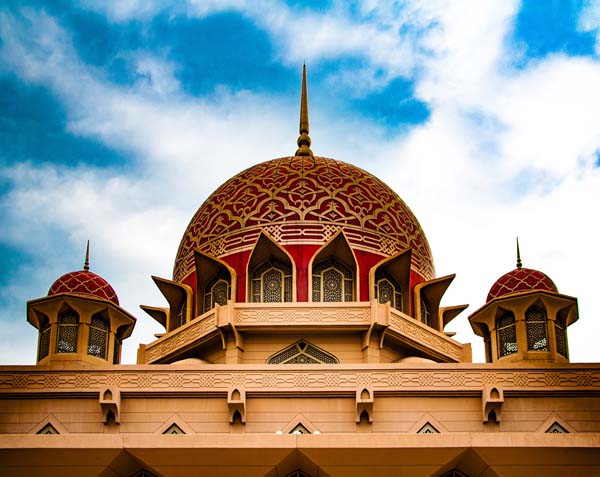
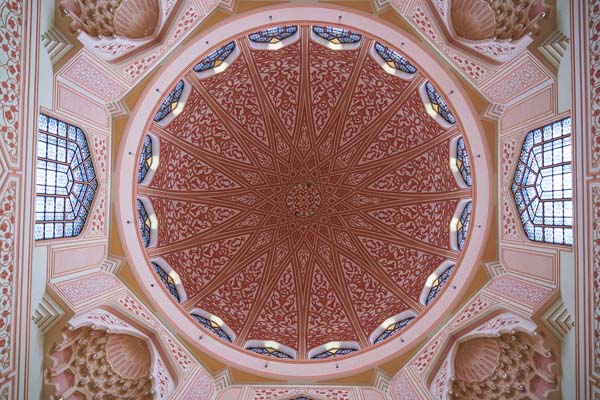
Here is an inside image of the Blue Mosque in Istanbul, Turkey:
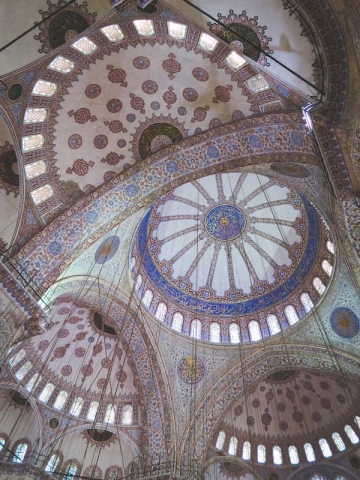
Here is some intricate 3D muqarnas (celestial casades) found in the St. Petersburg Mosque in Russia:
Daud Sutton in Islamic Design tells us, “Muqarnas are structured on tiered horizontal layers joined by flat and curved surfaces which articulate their descent – echoing the idea of spiritual light cascading from the Heavens to condense as crystalline matter on Earth.”
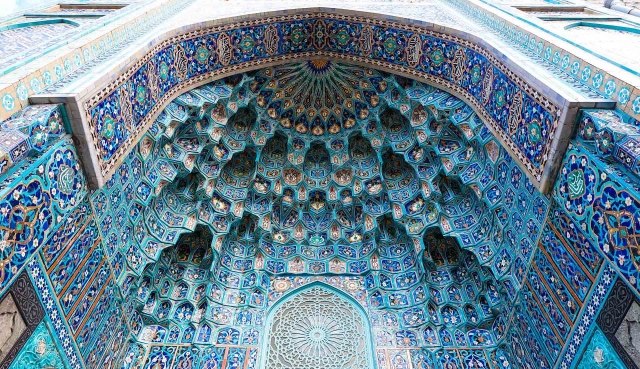
Here are more muqarnas from the Imam Mosque in Isfahan, Iran:
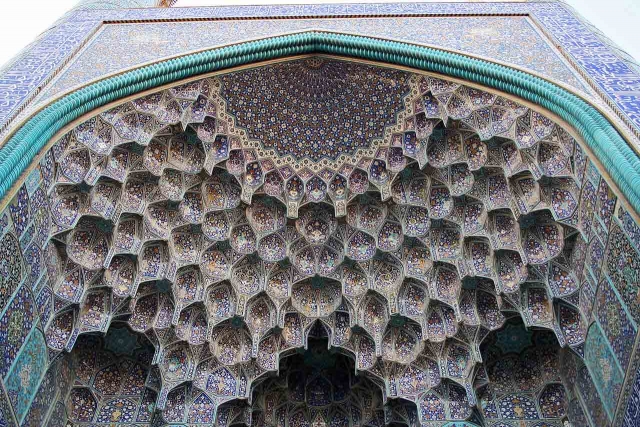
“In the Alhambra (14th century) in Spain, geometric pattern is perfectly integrated with biomorphic design (arabesque) and calligraphy. These are the three distinct, but complementary, disciplines that comprise Islamic art. They form a three-fold hierarchy in which geometry is seen as foundational.”30
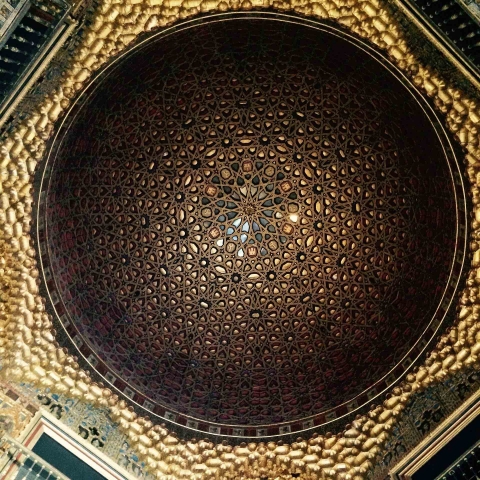
Dome ceiling in the Alhambra
Jewish Mandalas
The Star of David:
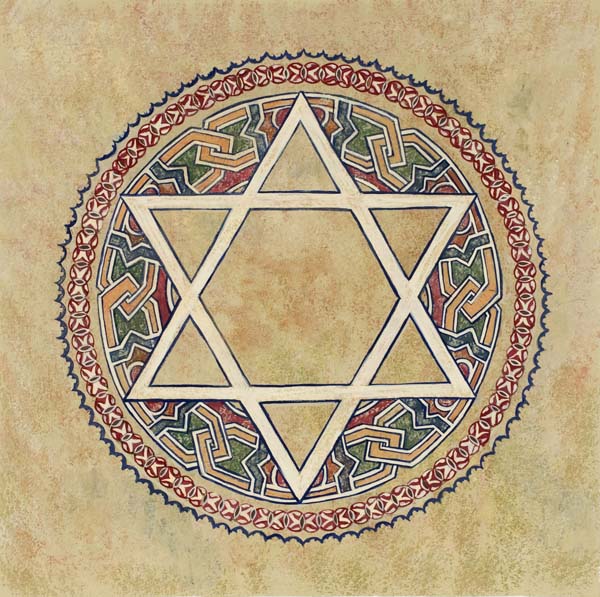
Wikipedia tells us, “The hexagram or “Star of David”, which became a symbol of Judaism in the modern period and was placed on the flag of Israel in 1948, has its origins in 14th-century depictions of the Seal of Solomon. (pictured below)”

The hexagram is also found in other cultures as the Mark of Vishnu in Hinduism, the Egyptian Merkaba, the Vajravarahi Mandala in Buddhism, the Square and Compass in Freemasonry and seals of Islam (all pictured below).
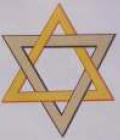
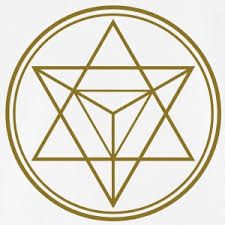
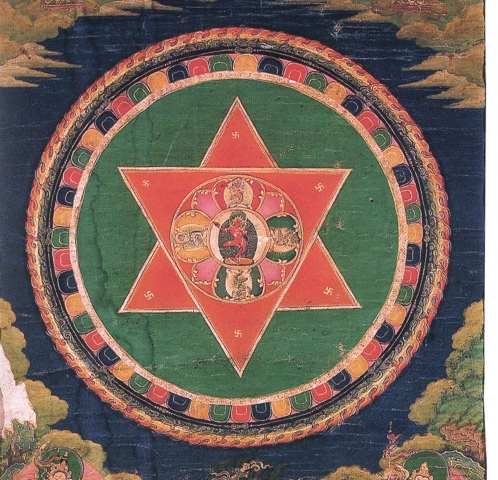
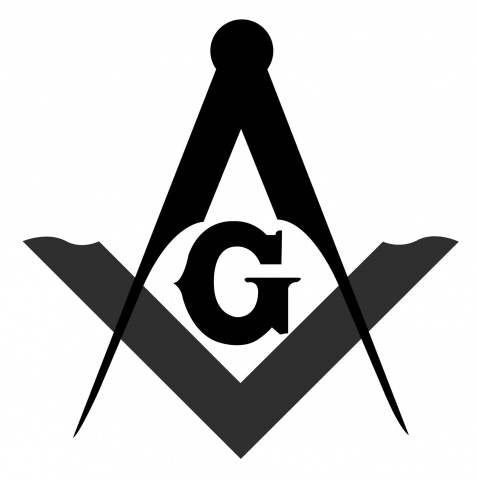
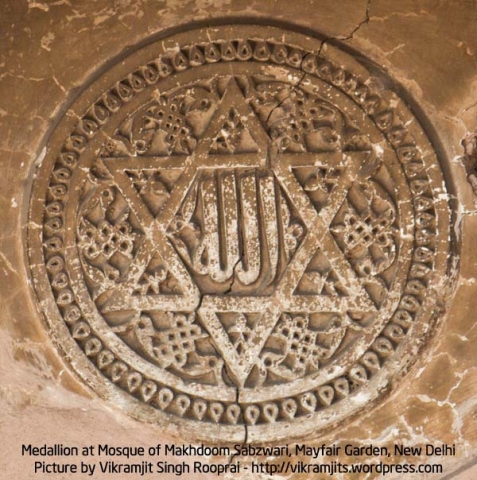
How to Use a Mandala
“There are many uses for a mandala. The design of the mandala is supposed to be visually appealing so as to absorb the mind in such a way that irritating thoughts are unable to get through and a spiritual essence surrounds the individual observing the mandala, which in turn allows the individual a higher consciousness or awareness, almost as though being hypnotized. This allows the busy mind to take a break while the creative mind is allowed to run free.
Having said that, the mandala is primarily used as a form of meditation to gain knowledge from within.
Select a mandala that appeals to you. You should know the meaning of the mandala you have chosen or set your own meaning before using it for meditation.
Once the intention has been set, you can begin focusing on the mandala. Allow yourself to take in the lovely designs, allow your mind to wander. Just like watching a candle flame in candle therapy, if your mind starts to think about the usual mundane things, simply bring your focus and attention back to the beauty of the mandala. Let the mandala absorb all your attention, by falling into it and gazing into the colors, swim in its patterns. As you begin to fall into the mandala, you will experience a feeling of lightness, and intuitive thoughts may arise. Relax, let thoughts and feelings come to you. Float with it. If you begin to feel panic, feel lost, uncomfortable or if you start thinking about those “mundane” things again, just relax and refocus your attention back to the mandala.”31
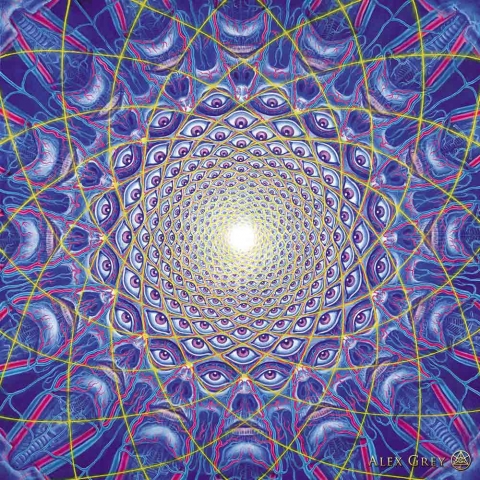
Alex Grey, Collective Vision
Alex Grey had this to say about the painting, “The many faces of Collective Vision united by the mandalic eye-field suggest both expansion of consciousness and sharing of consciousness with other beings. The painting was based on a profoundly ego dissolving entheogenic mystical trance where I heard the words, ‘Infinite Oneness… the Oneness should never forget the Infinitude and the Infinitude should never forget the Oneness.”
- https://en.wikipedia.org/wiki/Mandala
- Lawlor, Robert, Sacred Geometry: Philosophy & Practice, Thames & Hudson, 1982
- Michell, John, The Dimensions of Paradise, Inner Traditions, 2nd edition, 2008
- Muller und Schindler, The de Lisle Psalter, http://www.muellerundschindler.com/en/product/de-lisle-psalter/
- Dove, Mary, The Perfect Age of Man’s Life, Cambridge University Press, 1986
- ibid.
- Booth, Mark, The Secret History of the World,Overlook Press, 2010
- Von Simson, Otto, The Gothic Cathedral: Origins of Gothic Architecture and the Medieval Concept of Order, Princeton University Press, 1974
- ibid.
- http://www.hiddenpoweruniversity.com/frank_myrrh.htm
- The Washington Post, Chant: A healing art?, 25 June 2008, https://www.washingtontimes.com/news/2008/jun/25/chant-a-healing-art/
- http://dragon_azure.tripod.com/UoA/Med-Arch-Rose-Window.html
- Von Simson, Otto, The Gothic Cathedral: Origins of Gothic Architecture and the Medieval Concept of Order, Princeton University Press, 1974
- Schneider, Michael, A Beginner’s Guide to Constructing the Universe, Harper Perennial, 1994
- Michell, John, The Dimensions of Paradise, Inner Traditions, 2nd edition, 2008
- ibid.
- Booth, Mark, The Secret History of the World,Overlook Press, 2010
- Lawlor, Robert, Sacred Geometry: Philosophy & Practice, Thames & Hudson, 1982
- https://en.wikipedia.org/wiki/Stone_circle
- http://www.sun-nation.org/sun-maya-hunab-ku.html
- http://www.onmarkproductions.com/html/mudra-japan.shtml
- https://www.metmuseum.org/art/collection/search/45596
- Mahdihassan, S, Comparing Yin-Tang, the Chinese symbol of creation, with Ouroboros of Greek alchemy, American Journal of Chinese Medicine, 17(3-4), 1989, https://www.ncbi.nlm.nih.gov/pubmed/2633627
- Gyurme, Tenzin, The Flower of Life and the History of Meta-Physics, House of Goddess – Ireland, 2007
- Khanna, Madhu, Yantra: The Tantric Symbol of Cosmic Unity, Inner Traditions, 2003
- Encyclopedia of New Age Beliefs
- https://archive.asia.si.edu/exhibitions/online/mandala/mandala.htm
- Henry, Richard, Geometry – The Language of Symmetry in Islamic Art, http://artofislamicpattern.com/resources/educational-posters/
- ibid.
- ibid.
- http://spiritualawakening.weebly.com/mandalas-what-are-they.html
Recent Comments